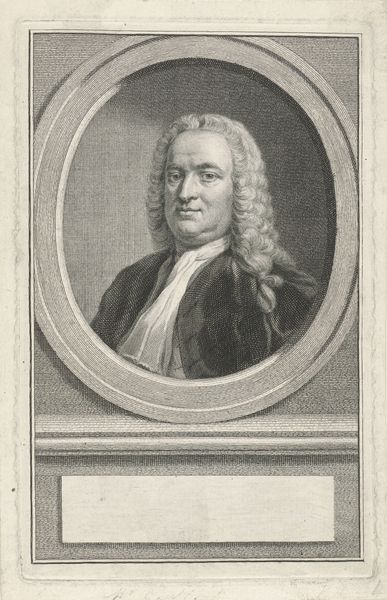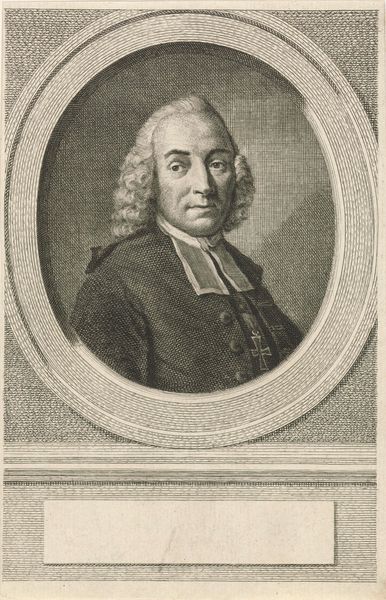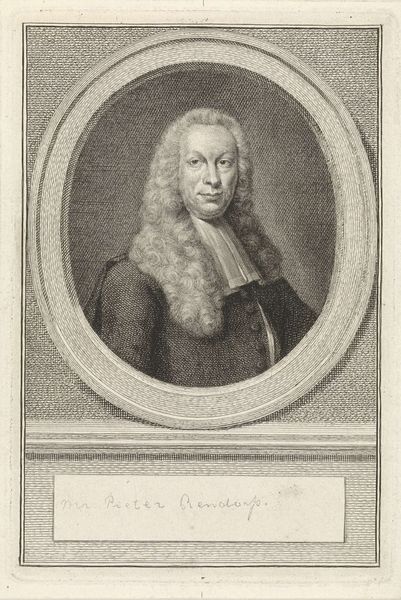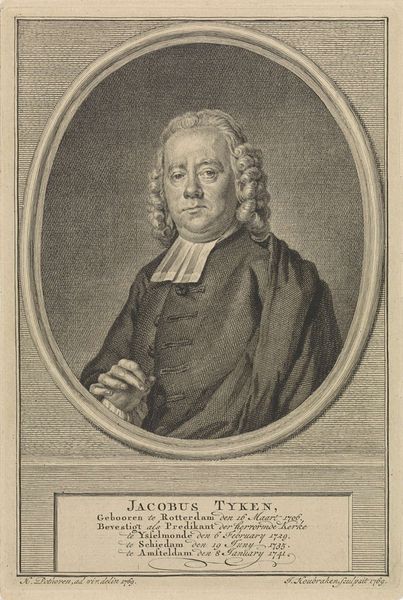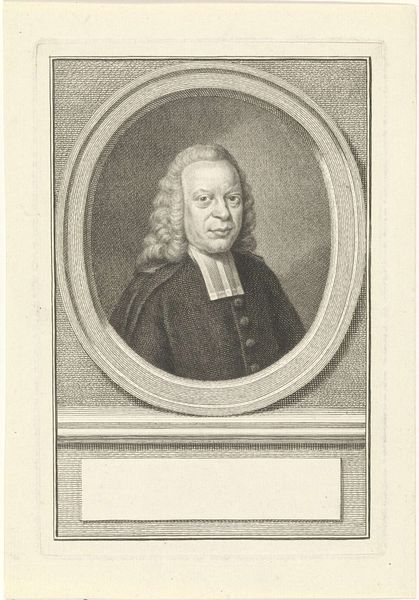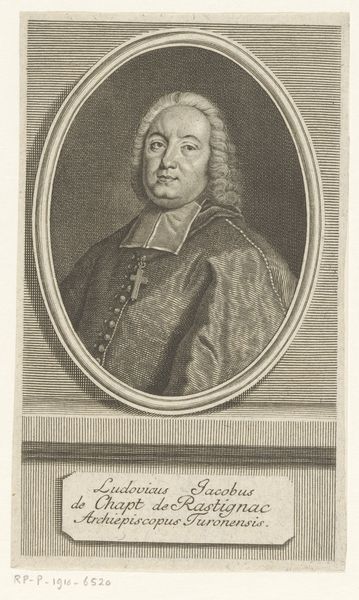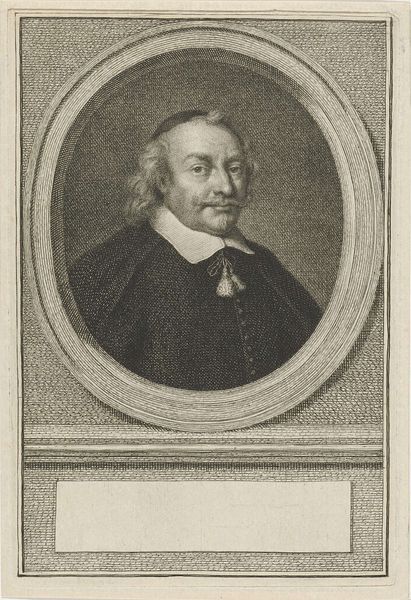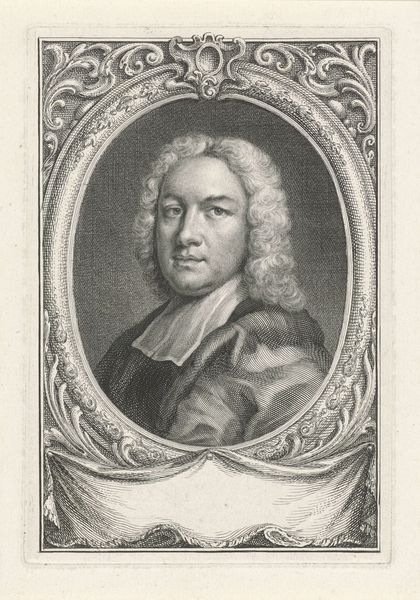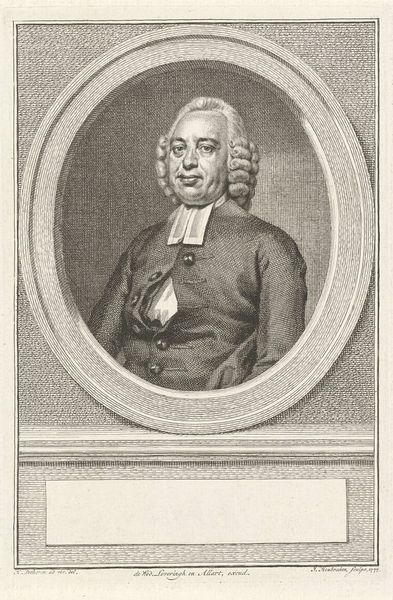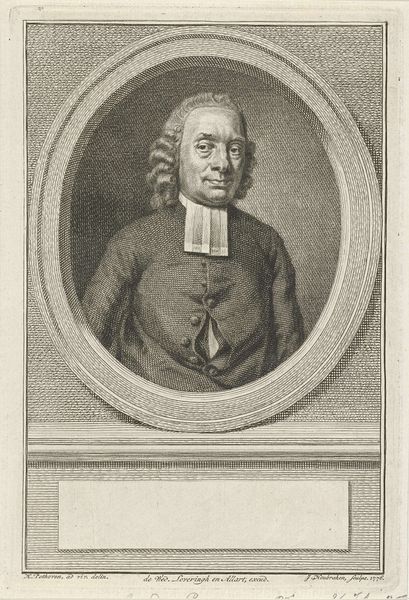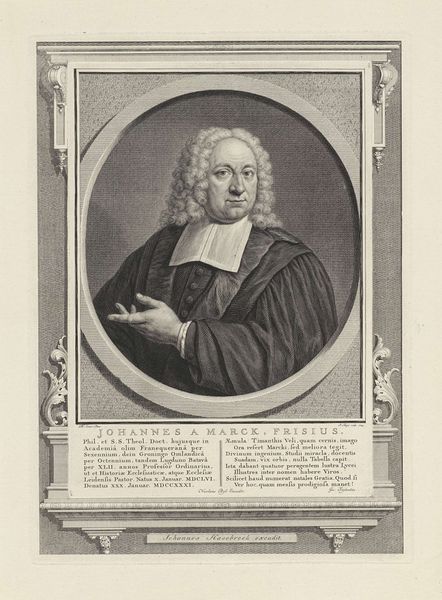
Dimensions: height 176 mm, width 115 mm
Copyright: Rijks Museum: Open Domain
Curator: Welcome. Before us is Jacob Houbraken's 1776 engraving, "Portret van Georgius Lemke," currently residing here at the Rijksmuseum. It depicts its subject in a stately oval frame. Editor: It's striking how much detail he manages to convey. The figure almost seems to step out of the frame due to the detail in the fabric of his garment, even with such stark materials. Curator: Observe the interplay of light and shadow that structures Lemke's face. The fine, etched lines create subtle gradations, defining his features and imparting a sense of depth and presence. Notice how the oval frame serves not merely as a border, but as an integral design element. It emphasizes the subject’s countenance, drawing the eye. Editor: The process of creating this engraving must have been painstaking. Imagine the precision required to transfer such detail onto a metal plate, and then print it—every line represents skilled labor. And think of the social function of this kind of print, making portraits accessible. What materials beyond paper and ink would be in this print: acid, metal, tools, craft. Curator: Quite so. Houbraken masterfully employs line and form to achieve a balance between realism and idealization, aligning it with baroque aesthetics. Note, for example, the detail in the pattern background. Editor: I’m thinking, too, about access. Engravings like this democratized portraiture to some degree. No longer confined to painted canvases for the elite. Now it became part of a system of production and circulation, reaching wider audiences, disseminating images. Curator: Indeed. This portrait isn’t simply a depiction; it is an exercise in representing status. The details in his garment mark status, yet remain distinctively Baroque. A careful study reveals much about Houbraken’s skill in capturing not only likeness but also an entire historical milieu. Editor: Understanding these prints as objects shaped by social and economic conditions provides invaluable context, and even greater depth, in experiencing the portrait, I find. The layering of process and materials allows greater understanding of how portraits shape perceptions. Curator: Agreed. It's through our varied perspectives—mine attuned to formal structure and yours emphasizing materiality and social function—that we can appreciate its artistic achievement and socio-cultural resonance.
Comments
No comments
Be the first to comment and join the conversation on the ultimate creative platform.
